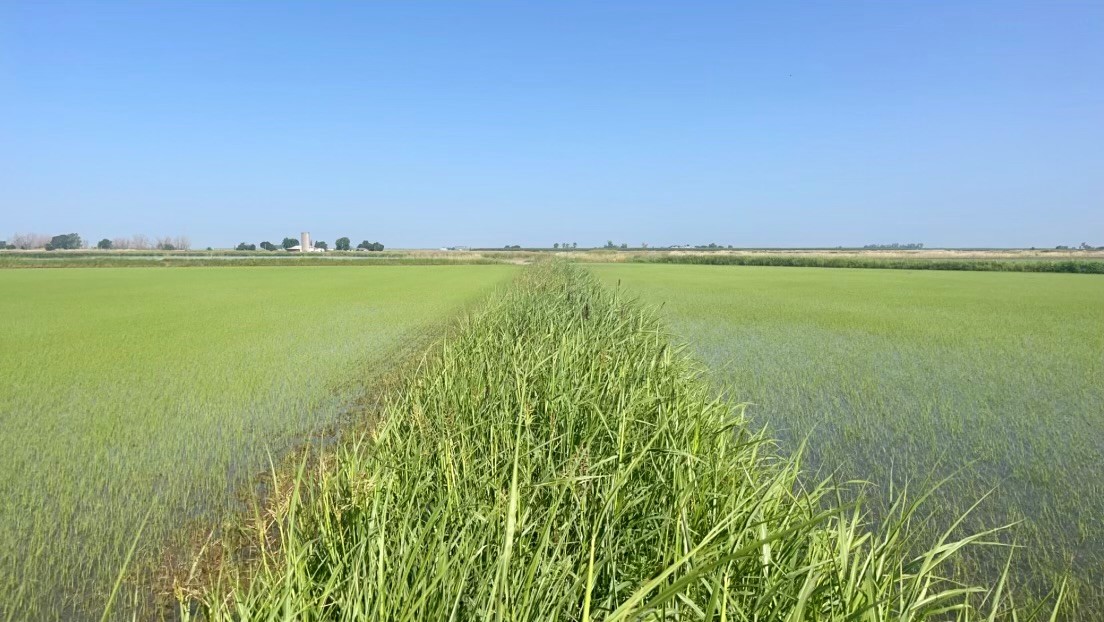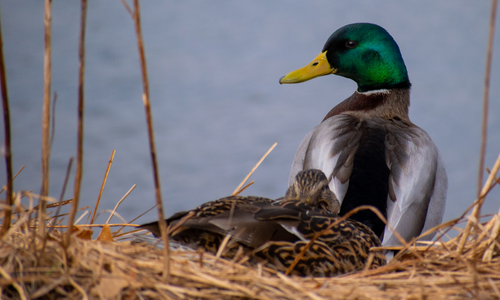The Rice Levee, Road Edge, and Ag Corridor Program pays private landowners to provide waterfowl nesting habitat on rice levees and roads, during the spring and summer. To be eligible for this program landowners must be willing to forgo mowing or reconstruction of their rice levees or roads from the previous growing season. The mowing or construction of levees and roads eliminates vegetation and provides little to no nesting cover for local breeding pheasants and waterfowl come spring. Previous studies have shown that fields with undisturbed levees provide better nesting cover and produce significantly more birds.


Funding for this program is provided by the new Nesting Bird Habitat Incentive Program, which is run by the California Department of Fish and Wildlife and is implemented by California Waterfowl. The objective of this program is to improve conditions for local breeding waterfowl, pheasants, and other upland nesting birds. California Waterfowl has been working with the Department and other organizations to design and establish this program.
PROGRAM REQUIREMENTS:
To participate in this program, rice levees, or roads must be left undisturbed from the previous growing season. Road corridors must be at least 5 feet wide to be enrolled. Enrolled levees and roads must be left undisturbed until July 15th. If fields enrolled in the program do not get planted in the spring, they may still be eligible for enrollment in the Fallow Field Program.
Landowners must allow monitoring on levees or roads of any enrolled fields. California Waterfowl & U.S. Geological Survey staff will regularly monitor enrolled fields for nesting activity from April 1st to July 15th. Monitoring will be done in a way that does not impact the crop, such as walking the levees and marking active nests every three weeks. All active nests will be checked once a week.
Incentive Rate and Funding:
-
- There will be $100,000 available for this program in the 2025 nesting season.
- Payment rates: This program pays a fixed rate of $.80 per linear foot of levee or road enrolled.
- Payments will be made shortly after July 15th if all program requirements are met.
Program Area:
-
- Enrollment for this program is constrained to the Central Valley and the associated planning regions, as designated by the Central Valley Joint Venture.
Eligible Applications:
-
- Vegetation on enrolled rice levees or roads must be left from the previous growing season.
- Rice fields with enrolled levees must be planted in the growing season.
Ineligible Applications:
-
- Rice levees or roads that are reconstructed after the previous growing season.

RANKING AND SELECTION:
Applications will be reviewed by a Selection Committee that is made up of biologists from the CWA and representatives from each of the following Department Programs: Waterfowl, Upland and Small Game, Wetland Conservation Program, and the Nesting Bird Habitat Incentive Program. After the solicitation closes, all applications will be evaluated and scored based on the following ranking categories:
| Ranking and Scoring Rice Levees AG Corridors |
Max Points 47 |
|
1. Condition of Levees. 6 pt = All enrolled levees or roads contain thick thatch from previous growing season. |
12 |
|
2. Levee Width. 10 pt = Levees/roads that are more than 15 feet wide on the top. |
15 |
|
3. Continuity and Edge Impacts of Field 4 pt = Low perimeter/area ratio |
4 |
|
4. Other Qualities and Conservation – past success 3 pt = The property has successfully participated in NBHIP or other Conservation Programs |
3 |
|
5. Other Qualities and Conservation – roads 3 pt = All roads on the property have vegetated edges that are at least 3 feet wide |
3 |
|
8. Proximity to State Wildlife Areas and National Wildlife Refuges. 5 pt = Protected area within 0 - 1 miles |
5 |
|
9. Proximity to protected Private Lands (Presley Program or Conservation Easements) 5 pt = Protected area within 0 - 1 miles |
5 |
WANT TO PARTICIPATE?
Applications for the 2026 season ran from October 13th to November 30th 2025, and are now closed.
If you have questions, please contact Jason Coslovich at (408)644-3525 or jcoslovich@calwaterfowl.org.


